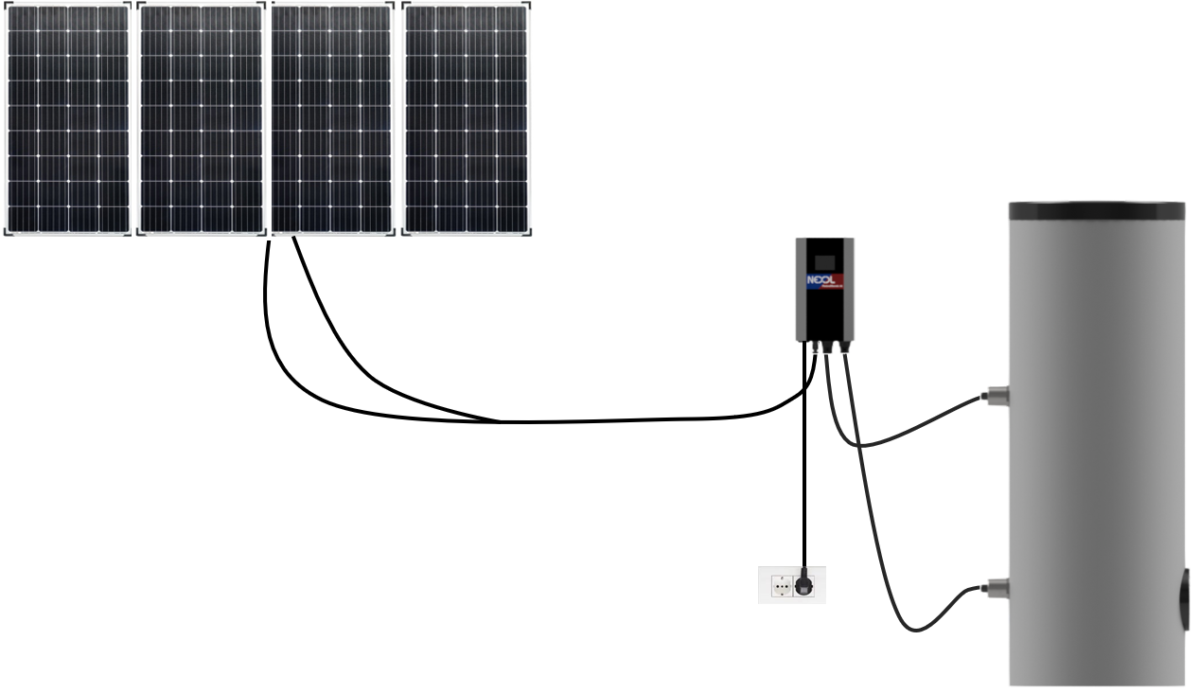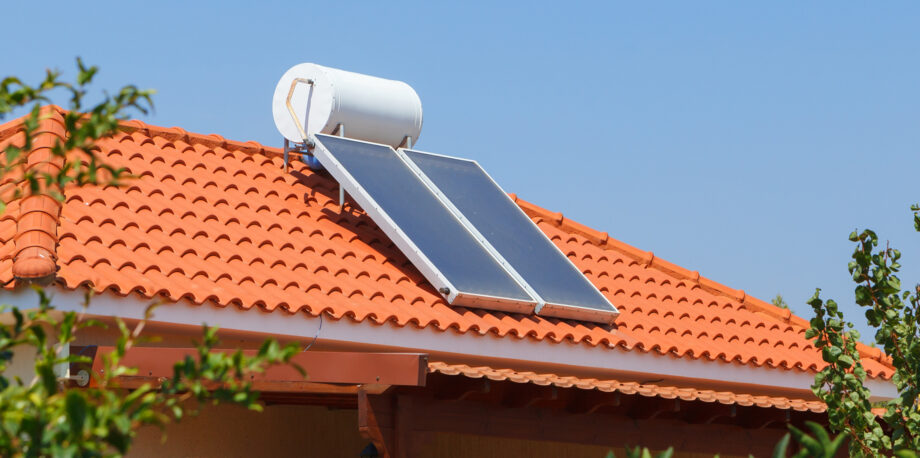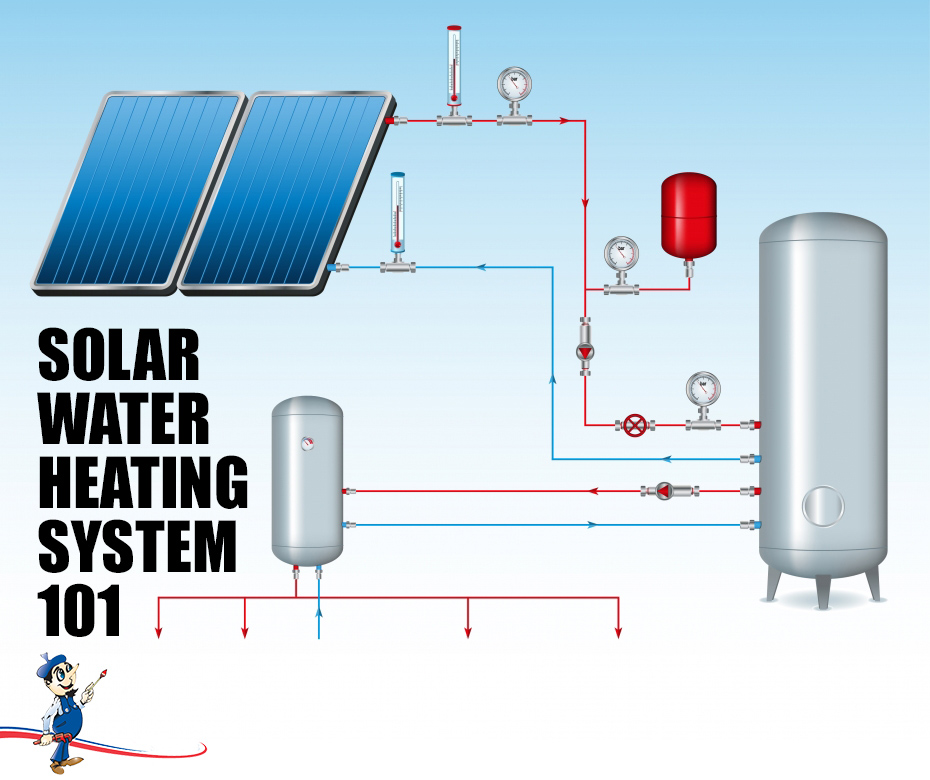To convert an electric water heater to solar power, install solar panels and connect them to the water heater. This reduces electricity costs and promotes sustainability.
Switching your electric water heater to solar power is a smart, eco-friendly choice. Solar panels harness the sun’s energy, providing a renewable energy source. This conversion not only lowers utility bills but also decreases your carbon footprint. Solar water heating systems are highly efficient and can work in various climates.
The initial investment may seem high, but long-term savings and environmental benefits are substantial. Proper installation and maintenance ensure optimal performance. With growing concerns about energy consumption, converting to solar power offers a sustainable solution for modern households.

Credit: www.pv-magazine.com
Page Contents
- 1 Introduction To Solar Water Heating
- 2 Assessing Your Current System
- 3 Choosing The Right Solar System
- 4 Installation Requirements
- 5 Step-by-step Conversion Process
- 6 System Integration
- 7 Maintenance And Troubleshooting
- 8 Cost And Savings Analysis
- 9 Environmental Impact
- 10 Conclusion And Future Trends
- 11 Frequently Asked Questions
- 12 Conclusion
Introduction To Solar Water Heating
Solar power is a clean energy source. It helps reduce electricity bills. Solar panels use sunlight, which is free. Using solar power lowers carbon footprints. It also makes homes more energy-efficient. Solar power systems need little maintenance. Once installed, they last for years. This makes them a smart investment.
Solar water heaters use the sun’s energy to heat water. They have solar collectors on the roof. These collectors capture sunlight. The captured energy heats water in a storage tank. The hot water is then used in the home. Solar water heaters can work in any climate. They are a great way to save money and energy.

Credit: ensia.com
Assessing Your Current System
Electric water heaters come in different types. Tankless heaters heat water on demand. Storage tank heaters keep water hot in a tank. Heat pump heaters use air to heat water. Each type has its own energy use.
Check your heater’s energy use. Look at the energy label on your heater. It shows how much electricity it uses. High numbers mean more energy. Calculate how much hot water you need daily. This helps in planning for solar power. Track energy bills for a month. Compare the costs.
Choosing The Right Solar System
There are two main types of solar collectors. The first type is flat plate collectors. These are simple and cost-effective. The second type is evacuated tube collectors. They are more efficient in colder climates. Both options have their pros and cons. It is important to choose the right one for your needs.
The storage tank is crucial for solar water heating. Make sure the tank is well-insulated. This helps retain heat for a long time. There are two main types of tanks. Direct tanks heat water directly. Indirect tanks use a heat exchanger. Choose the right tank based on your system and climate.

Credit: www.artplumbingandac.com
Installation Requirements
Upgrading an electric water heater to solar power requires solar panels, a compatible inverter, and proper mounting hardware. Ensure sufficient sunlight exposure and follow local building codes for a successful installation.
Roof Space And Orientation
Your roof needs enough space for solar panels. Panels should face south for the best sunlight. Roofs with angles work better. Make sure there are no big trees or buildings blocking the sun. A clean roof without shade is ideal. Check the roof strength to hold the panels.
Plumbing And Electrical Adjustments
New pipes are needed to connect the water heater to solar panels. An electrician will add wires and controls. The water heater may need a new pump. A solar controller will manage the system. Safety checks are important for electrical parts. Everything should meet local codes.
Step-by-step Conversion Process
Transform your electric water heater into a solar-powered system with this simple step-by-step guide. Save on energy bills while reducing your carbon footprint. Follow these easy instructions for a seamless conversion.
Disconnecting Electric Components
Turn off the power supply to your electric water heater. Ensure safety by switching off the main circuit breaker. Remove the access panel to reach the wiring. Carefully disconnect all electrical connections. Use a voltage tester to confirm no power remains. Label the wires for future reconnection if needed. Remove the thermostat and heating elements. This prepares the heater for the solar conversion.
Installing Solar Collectors
Place the solar collectors on your roof. Position them to face the sun for maximum efficiency. Secure the collectors using mounting brackets. Connect the collectors to the water heater with insulated pipes. Use a pump to circulate water between the heater and collectors. Install a heat exchanger if needed. This system will heat water using solar energy.
System Integration
Start by turning off the power to the water heater. Disconnect the electrical connections safely. Install a solar collector on the roof. Connect the collector to the water heater pipes. Use insulated pipes to prevent heat loss. Ensure the connections are tight and secure.
Install a controller to manage the system. The controller adjusts the water temperature. Connect sensors to the water heater and the solar collector. These sensors help monitor the temperature. The controller uses this data to optimize performance. Ensure the controller is compatible with your system.
Maintenance And Troubleshooting
Check the solar panels for dirt and debris every month. Clean them with a soft cloth and water. Inspect the wiring for any damage. Tighten any loose connections. Ensure the inverter is working properly. Look for any error messages on the display.
If the water is not heating, check the inverter first. Make sure it is on and working. Look at the solar panels for any shading. Clear any obstructions. If you see leakage, check the pipes and connections. Tighten or replace any faulty parts. In case of low efficiency, clean the panels and check the angle.
Cost And Savings Analysis
Switching from an electric water heater to a solar-powered system significantly reduces utility bills. Enjoy substantial long-term savings with minimal maintenance costs.
Initial Investment
Switching to solar power requires an initial investment. Solar panels and installation can cost around $3,000 to $10,000. This depends on the size of the system. Government incentives can help reduce this cost. Some people might get tax credits or rebates. These incentives can save you a lot of money.
Long-term Savings
Solar power can save a lot of money in the long run. You can save up to 50% on your energy bills. This means you can keep more money in your pocket. Solar panels usually last for about 25 years. Over time, the savings can add up to thousands of dollars. Plus, solar power is good for the environment.
Environmental Impact
Switching an electric water heater to solar power can significantly reduce energy consumption and lower carbon footprints. Harnessing solar energy promotes sustainability, resulting in both environmental and financial benefits.
Reducing Carbon Footprint
Using solar power helps the environment. It reduces the need for fossil fuels. This means less carbon dioxide in the air. Solar energy is clean and renewable. It does not pollute the air or water. By choosing solar power, you help slow down climate change. You can make a big difference with this small change.
Sustainable Living
Solar power supports a sustainable lifestyle. It uses the sun, which is a free resource. This reduces your energy bills. Solar panels last a long time. They need little maintenance. This makes them a smart and eco-friendly choice. Living sustainably helps protect the planet for future generations.
Conclusion And Future Trends
Converting electric water heaters to solar power significantly reduces energy costs and carbon footprints. Solar-powered systems promise eco-friendly solutions and future energy independence.
Advancements In Solar Technology
Solar technology is getting better every year. Panels are now more efficient and can capture more sunlight. This means they produce more energy. New materials are also being used. These materials make the panels lighter and easier to install. Battery storage systems are also improving. They can store more energy for use at night. These advancements make solar power a great choice for homes.
Future Of Home Energy Solutions
The future looks bright for home energy solutions. More people are using renewable energy sources. Solar power is leading the way. Homes will become more self-sufficient. They will rely less on traditional power grids. Smart home systems will manage energy use better. This will save money and reduce pollution. Solar power is a big part of this future.
Frequently Asked Questions
Can You Run An Electric Water Heater On Solar Power?
Yes, you can run an electric water heater on solar power. Solar panels convert sunlight into electricity, powering the heater. Ensure proper system sizing for efficiency.
Can You Convert An Electric Hot Water System To Solar?
Yes, you can convert an electric hot water system to solar. Install a solar collector and connect it to your existing system.
Can I Run An Electric Heater From A Solar Panel?
Yes, you can run an electric heater from a solar panel, but it requires a large system. Ensure the solar panel generates enough power to meet the heater’s energy demands. Consider battery storage to maintain consistent heating.
How Much Solar Does It Take To Run An Electric Heater?
To run an electric heater, you need a solar system of around 1. 5 to 3 kW, depending on the heater’s wattage.
Conclusion
Converting your electric water heater to solar power is a smart, eco-friendly choice. It reduces energy bills and environmental impact. With solar power, you harness renewable energy. This switch promotes sustainability and long-term savings. Embrace solar energy for a greener future and efficient water heating.
Make the change today!
